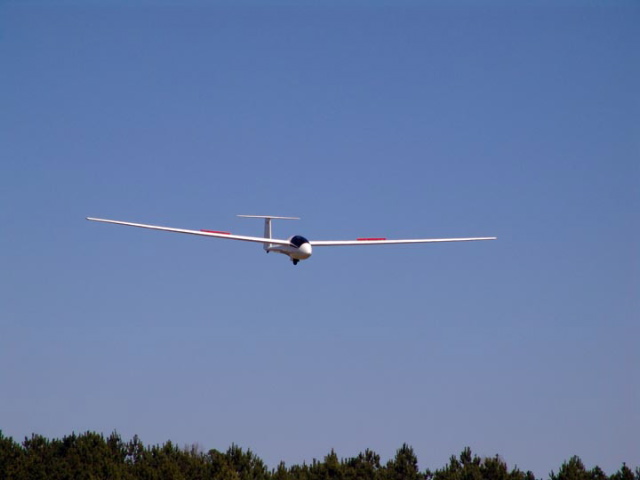

Responsive and fun to fly.


Photo by Steve Kempf

Photo by Steve Kempf

Std. Cirrus #172
Owner: Brian Resor
21,000ft, Moriarty, NM

panel before Cambridge 302 installation, Photo by Brent Gourley
Unofficial Flight and service manual
Standard Cirrus Disassembly / Assembly Procedure PDF .doc
See also Assembly & Elevator info on the Standard Cirrus organization page and the elevator assembly images below (Click to Enlarge).
The Cirrus Trailer, notice that the assembly instructions are kept inside the back door. Click to enlarge.
Cambridge 302 vario & 303 navigation unit instructions. The CAI 302 is a very nice modern electronic variometer, flight computer and approved flight recorder. Additionally it has a serial port on the back that can drive a moving map flight computer such as XC Soar or Oudie. (It is also possible to add a bluetooth system such as a K6 BT mux that would allow it to talk to an android phone for use with XC Soar). As of July 4, 2011, our Cirrus was equipped with a Cambridge 302 Vario/flight
recorder, which can be used to log flights for SSA badge submittals. Below is
the downloadable calibration form, which must be attached your SSA badge Cambridge Aero Instruments 302 Operator’s Card pdf 302 Direct Digital Variometer Manual 2007 & 2003 pdf Cambridge 302A/CFR Flight Recorder for Gliders Technical Manual and Specifications pdf IGC approval for flight recorder. pdf 303 Navigation Display Manual pdf Cambridge Digital Direct Vario (302) Data Port User’s Guide SV-517 Revision 2.2 pdf Windows utilities these run on windows computers, and can communicate via a USB>serial port cable such as FTDI Chip Serial Adapter which adds an RS-232 serial port to any PC pdf |
Cirrus Unofficial data from Sailplane Directory
| General Details | |
| Manufacturer: | Schempp-Hirth K.G. |
| Plane Name: |
Standard Cirrus |
| Country Of Origin: | Germany |
| Designer: | Klaus Holighaus |
| No. of Seats | 1 |
| No. Built | 701 |
| Performance: | |
| L/DMax: | 36 95 kph / 51 kt / 59 mph |
| MinSink: | 0.65 m/s / 2.1 fps / 1.26 kt |
| Specifications: |
| Span | Area | Empty Weight | Payload | Gross Weight | Wing Load | Water Ballast | |||||||
| m | ft | sq.m | sq.ft | kg | lb. | kg | lb. | kg | lb. | kg /sq.m |
lb. /sq.ft |
kg | lb. |
| 15 | 49.2 | 10 | 107.5 | 202 | 445 | 128 | 282 | 330 | 728 | 33 | 6.8 | 60 | 132 |
| Aspect ratio: | 22.5 |
| Airfoil: | Wortmann FX S 02-196 mod |
| Structure: | Steel-tube center section framework, fiberglass sandwich fuselage PVC foam core wings with fiberglass skin. |
| Engine: | N/A |
| Comment: Although the Standard Cirrus was a follow-on to the original Open Class Cirrus design, it is completely different aircraft, with a 15 m. wing with airbrakes on the top surface only, an all- moving T-tail and a steel tube skeleton in the wing-fuselage center section. A Cirrus won the U.S. Standard Class Nationals in 1969. Despite a claimed L/D ratio of 38, measured performance by both Paul Bikle and Ricard H. Johnson demonstrated less than 36. In 1975 an improved version called the Cirrus 75 was introduced with redesigned wing fairings, larger airbrakes and other improvements. 176 were manufactured under license by Burkhart Grob in Mindelheim, Germany. After production in Germany ceased in 1977, the Standard Cirrus was manufactured in Serbia by Vazduhoplovno Tehnicki Centar (later Jastreb Fabrika Aviona Jedrilica), first the Cirrus 75 and 75B version, and subsequently a modified Cirrus 81 with roomier cockpit and variable incidence tailplane. Between 1977 and 1978, the French company Lanaverre Industrie built 35 ships designated CS 11/75 L St. and CS 11/78 L St. These ships overlap the German serial numbers with serial numbers beginning at one. |
Back
to SES homepage
Last modified
December 24, 2018 0:13 AM
by CR